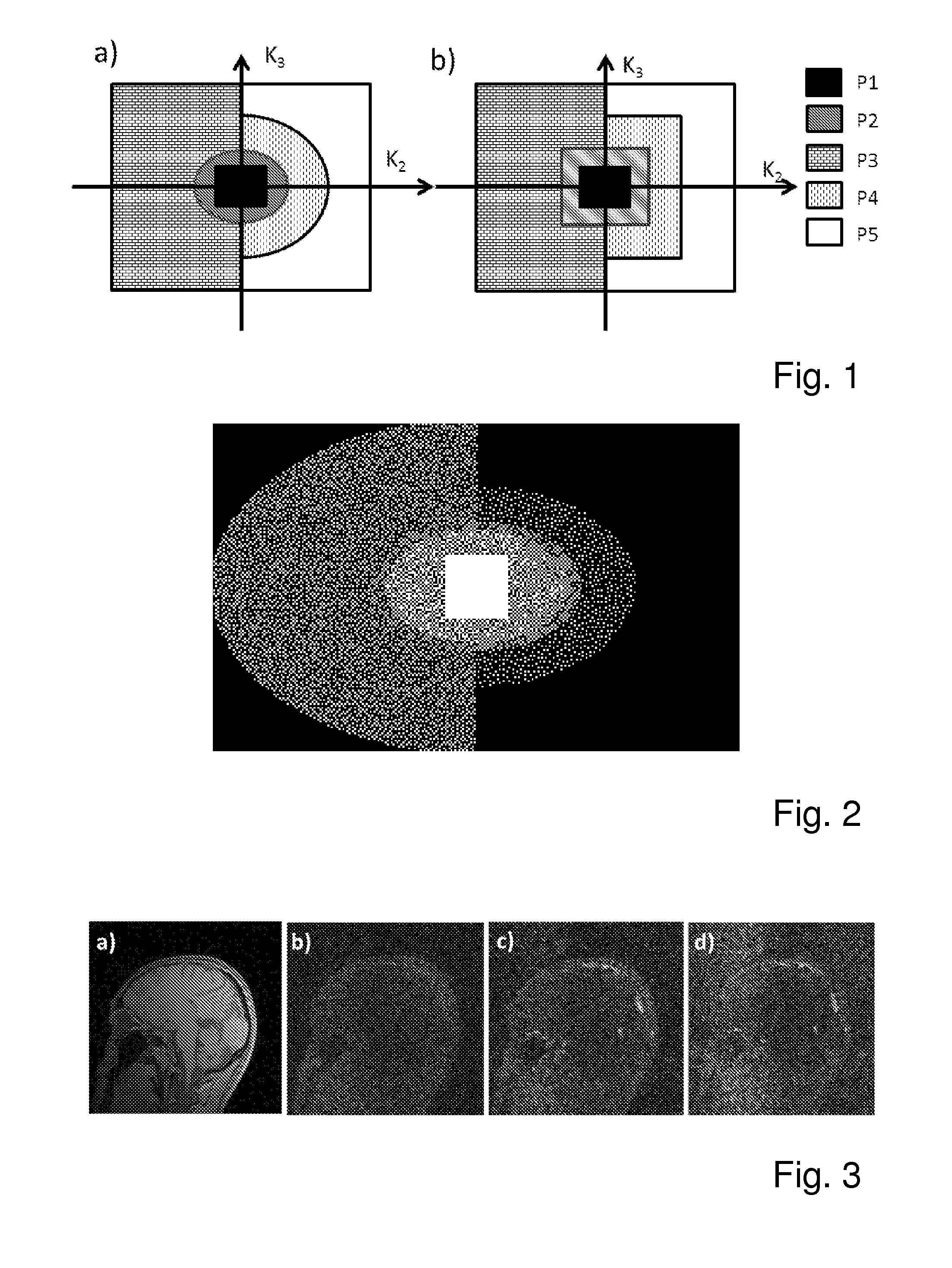Method for magnetic resonance imaging
- Summary
- Abstract
- Description
- Claims
- Application Information
AI Technical Summary
Benefits of technology
Problems solved by technology
Method used
Image
Examples
Embodiment Construction
[0061]In preferred embodiments of the present invention, the shape of the subsets of k2-k3 plane is rectangular. This is compatible with k-space regular undersampling, and the missing data are efficiently reconstructed using algorithm in Reference [7].
[0062]In an alternative embodiment of the invention, the shape of the subsets of k2-k3 plane is elliptical. Here, image phase is efficiently estimated with a limited amount of acquired k-space data.
[0063]In a further embodiment of the invention, wherein the estimate of the phase PR is taken from the reconstructed image by using only the symmetrically acquired data in Part 1 and Part 2 in k2-k3 plane. This variant of the method according to the present invention is simple and direct, and provides sufficient accuracy in regions with slow phase variation.
[0064]In another class of embodiments of the invention, the weighting map W is set to the magnitude of the intermediate solution x. The accuracy of the image phase estimation is dependent...
PUM
 Login to View More
Login to View More Abstract
Description
Claims
Application Information
 Login to View More
Login to View More - R&D
- Intellectual Property
- Life Sciences
- Materials
- Tech Scout
- Unparalleled Data Quality
- Higher Quality Content
- 60% Fewer Hallucinations
Browse by: Latest US Patents, China's latest patents, Technical Efficacy Thesaurus, Application Domain, Technology Topic, Popular Technical Reports.
© 2025 PatSnap. All rights reserved.Legal|Privacy policy|Modern Slavery Act Transparency Statement|Sitemap|About US| Contact US: help@patsnap.com



